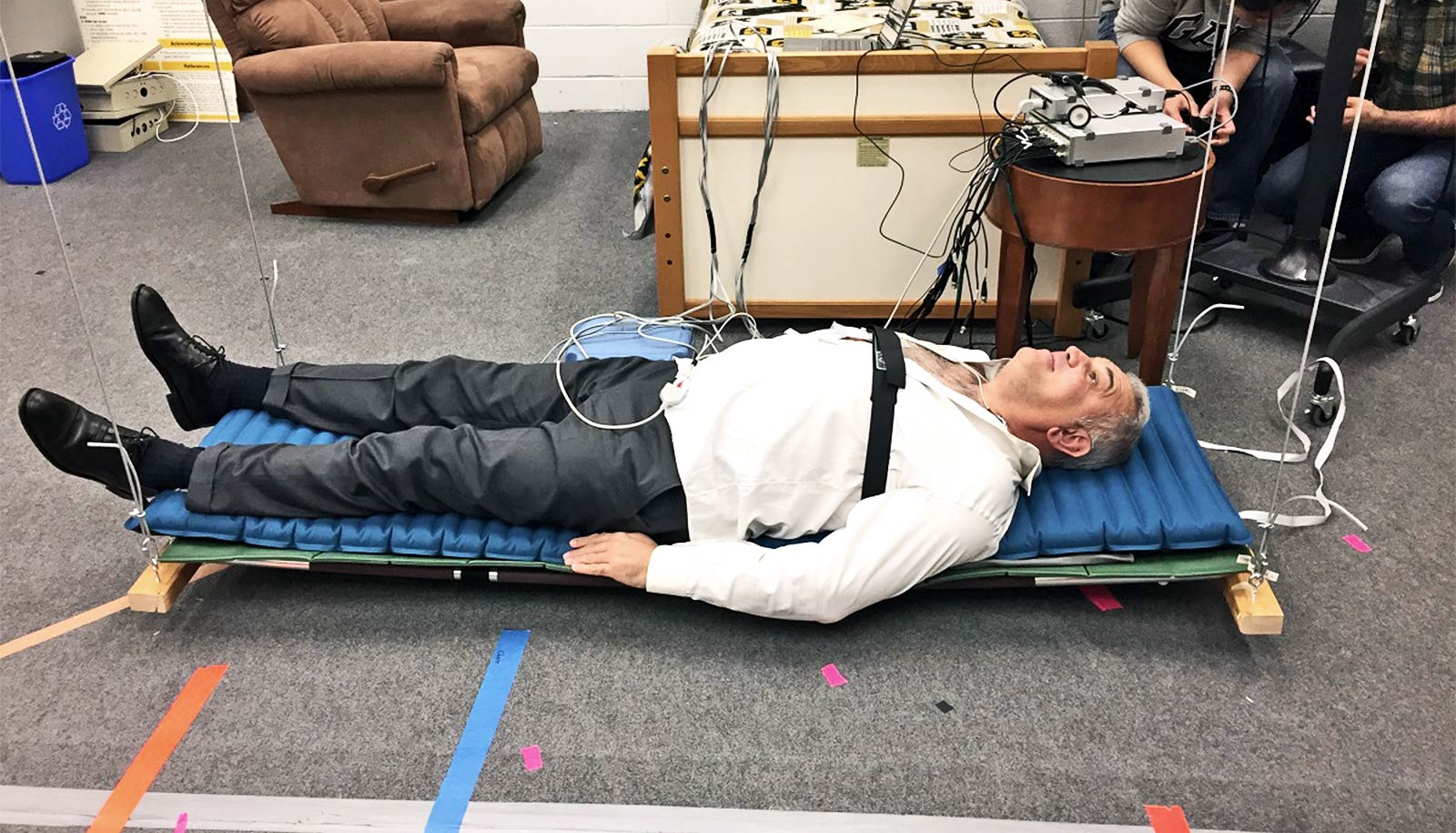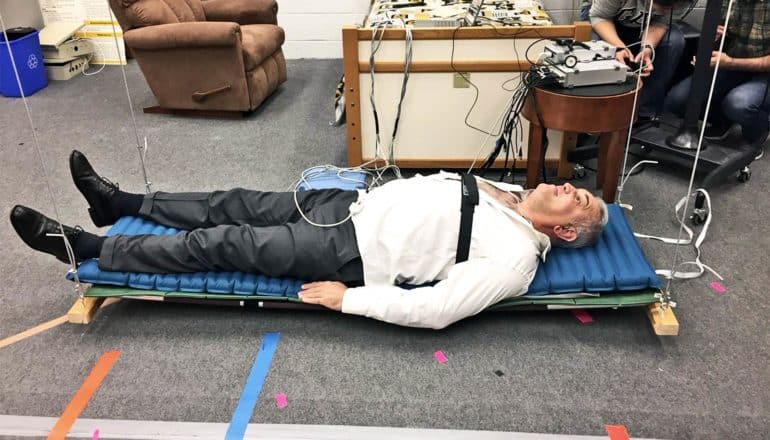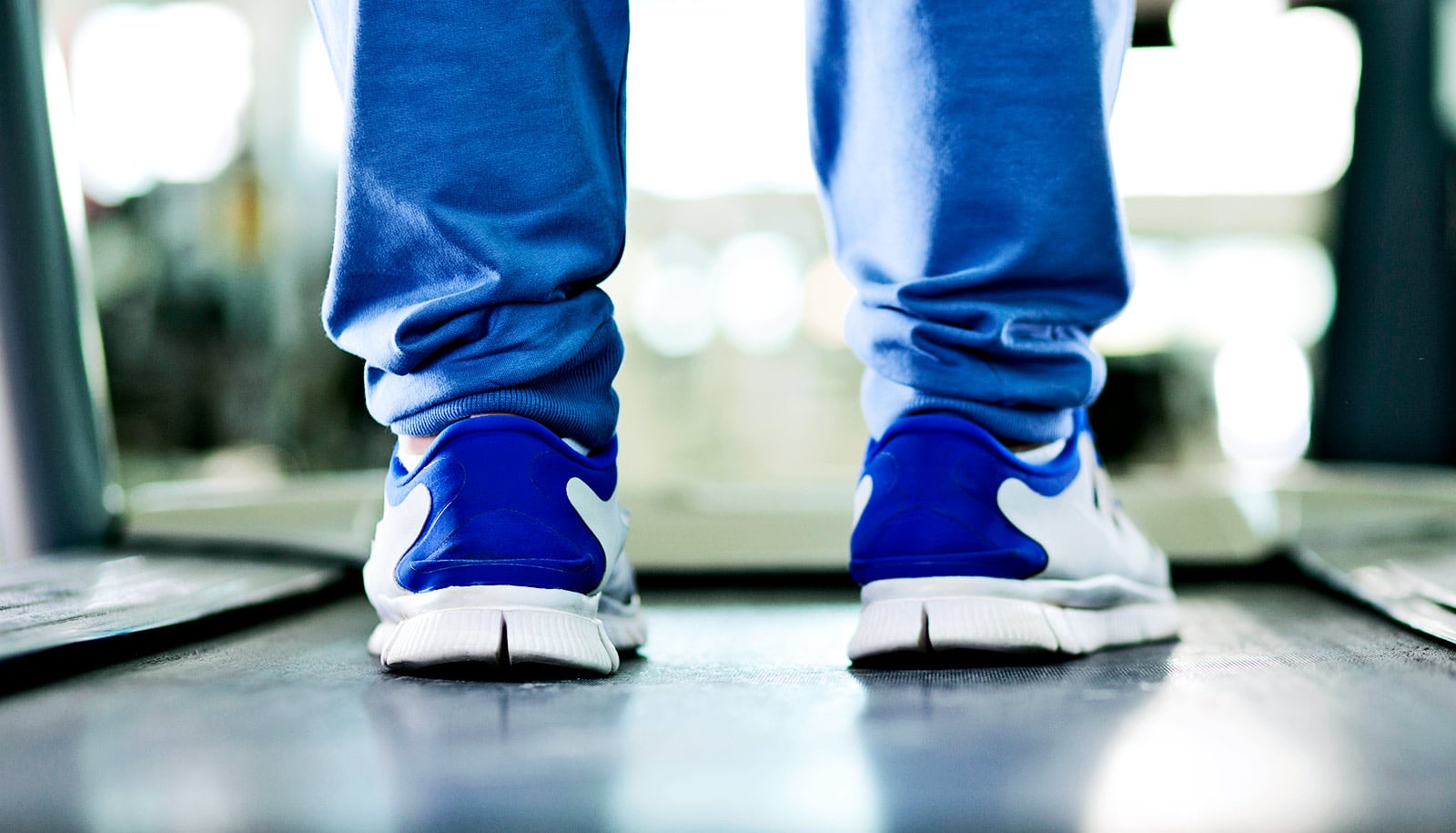
Ten years ago, Skubic’s team developed hydraulic sensors that they could place under a bed mattress to measure a person’s heart rate and respiration rate. The team used those sensors on this hanging bed to gather data for the mathematical model used in this study. (Credit: U. Missouri)
‘Virtual’ cardio system improves alternative heart test
A new math model could give scientists better information from non-invasive heart monitoring, which may help with early detection of heart disease.

A new mathematical model may pave the way for getting better information from ballistocardiograms, report researchers.
Every heart beat sends blood flowing throughout the human body. While an electrocardiogram uses a contact approach to measure the electrical activity of the heart, a ballistocardiogram is a non-contact way of measuring the mechanical effect of the blood flow through the cardiovascular system.
Researchers are currently working to develop a standardized model to interpret the results of a ballistocardiogram that could provide an additional approach for early detection of various cardiovascular diseases.
Ten years ago, the team developed hydraulic sensors that can be placed under a bed mattress to measure a person’s heart rate and respiration rate. They noticed the waveforms changed over time as people aged, indicating there was additional information coming from those measurements that they could use for tracking health changes.
“Right now, only five percent of the information in the ballistocardiogram is used, but if we can standardize the results, we can provide a map for understanding the underlying causes behind the real physiological motion of our bodies,” says Giovanna Guidoboni, a professor in the electrical engineering and computer science department in the University of Missouri’s College of Engineering.
“This could help in early detection and prevention of cardiovascular diseases such as heart disease.”
Guidoboni joined Marjorie Skubic’s team and created a mathematical model that allows them to understand the additional information from the ballistocardiogram and move one step closer to a standardized model. Skubic is also a professor in the electrical engineering and computer science department.
“Even when we stand or lie still, our mass redistributes inside our body and generates a bodily motion that can be captured with a ballistocardiogram,” Guidoboni says.
“By applying our mathematical model, we can see information that we haven’t previously known about an individual’s cardiovascular system, such as the elasticity of the arteries, the contractility of the ventricles in the heart, or the viscoelasticity of the blood vessels. We built a virtual cardiovascular system by mathematically modeling the blood flow in our bodies.”
The study will appear in IEEE Transactions on Biomedical Engineering.
Additional coauthors came from the University of Missouri, the Université of Strasbourg, the Politecnico di Milano, and the Université Paris Descartes. Funding came from the University of Missouri and the Center for Eldercare and Rehabilitation Technology. The content is solely the responsibility of the authors and does not necessarily represent the official views of the funding agencies. The team would like to acknowledge the contribution of David Heise of Lincoln University in the development of the hydraulic bed sensor while he was a graduate student.
Source: University of Missouri
The post ‘Virtual’ cardio system improves alternative heart test appeared first on Futurity.
Share this article:
This article uses material from the Futurity article, and is licenced under a CC BY-SA 4.0 International License. Images, videos and audio are available under their respective licenses.
Related Articles:
After exercise, signs in the blood may signal heart attack chances
Dec. 5, 2019 • futurityThin tissue flutter can damage replacement heart valves
July 30, 2020 • futurityLinks/images:
- https://arxiv.org/abs/1811.01044
- https://nbsubscribe.missouri.edu/news-releases/2019/0417-a-virtual-view-with-a-little-bit-of-math/?utm_campaign=261147_04-17-19%20Guidoboni-Skubic%20BKG&utm_medium=email&utm_source=email&dm_i=42N5,5LI3,2H9PN8,L1CF,1
- https://www.futurity.org/ballistocardiograms-math-model-2041612/
- https://www.futurity.org


